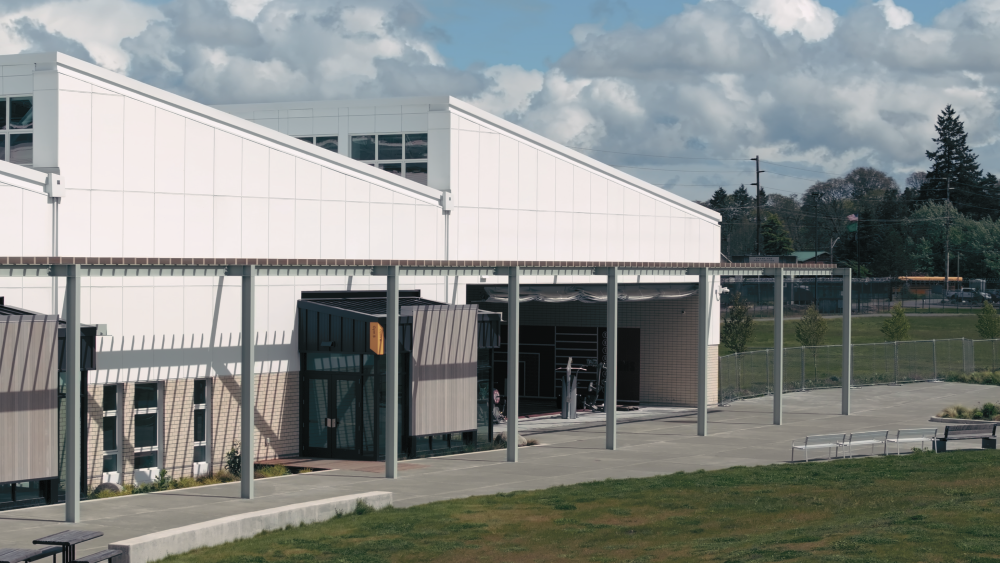
The Green Hill School Activities and Wellness Center brings the latest in trauma-informed design to the people who need it most — youth in custody.
Chehalis, WA
32,000 SF
Net Zero Ready
High-performance building envelope, cooling provided by natural ventilation, and a solar array
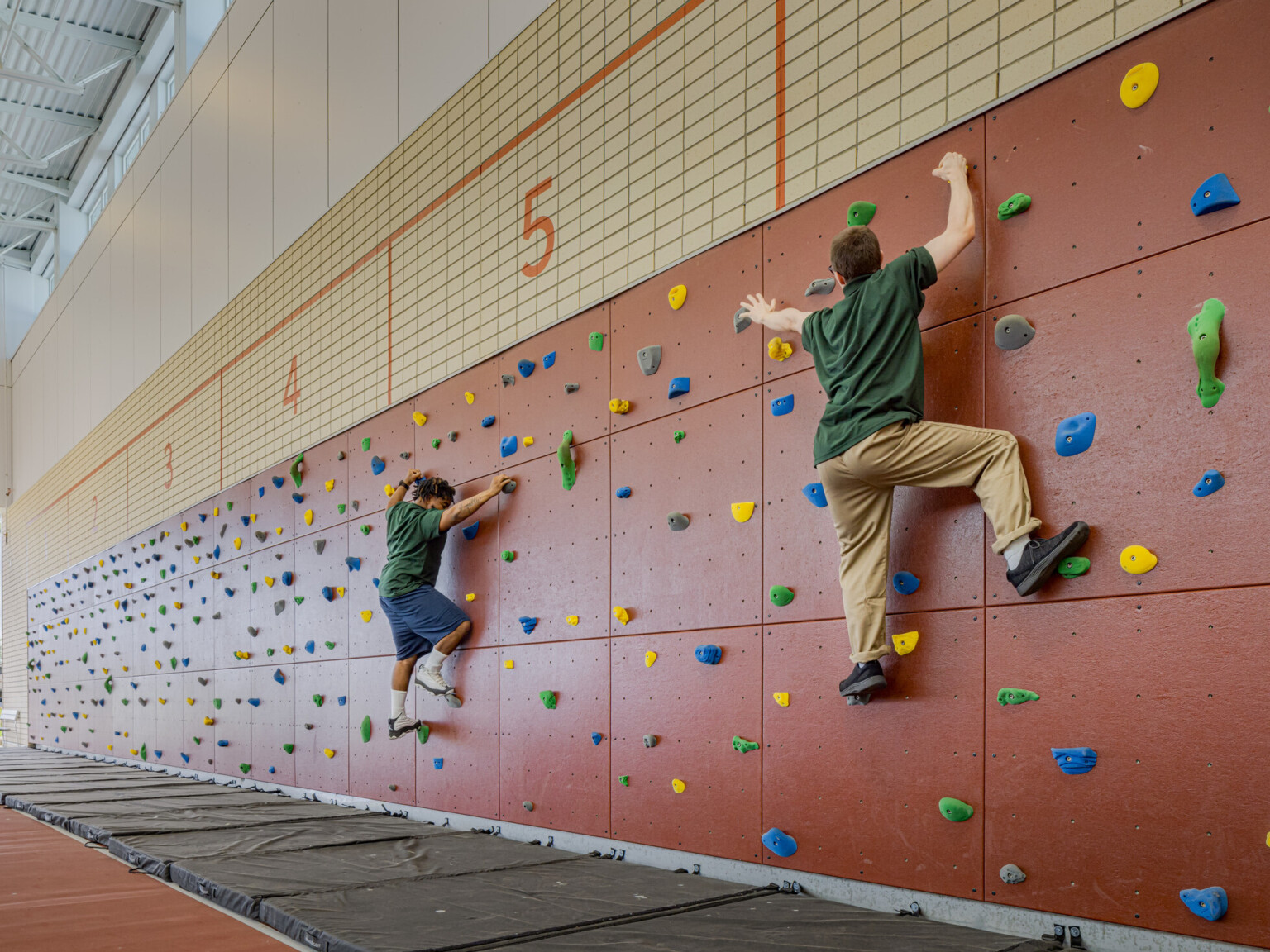
Many of the Youth-in-Residence at Green Hill School have experienced trauma — and too often, custodial settings can be traumatic in and of themselves. Our design drives to create a healing space for those youth and staff.
The campus sits beside a wetland that feeds into the Chehalis River and Watershed. Our design incorporates a series of rain gardens, known as bioswales, to illustrate the journey of stormwater across the landscape. Rainwater from the roof flows into a sunken channel across the paved courtyard, and then into the centrally located bioswales to filter the water before it enters the nearby wetland. This promotes water conservation, improves water quality, reduces pollution, and enhances biodiversity. Residents can have a sensory experience of these bioswales year-round in ‘rain gardens,’ thanks to the thoughtfully selected plants that provide a range of colors, textures, and scents.
Our design uses thoughtful transitions between active, dynamic gym spaces and the more quiet, reflective landscape. Residents cross over a boardwalk-like bridge that spans over the rain gardens, and a rainsplash feature takes water from the roofs and directs it down to the boulder below, the sound of which is and a reminder of the connection to water throughout. Natural materials are integrated into every aspect of the space, enhancing the rehabilitative experience for staff and students. Neutral tones, warm wood panels, and plenty of natural light echoes the surrounding environment, while strategically placed wood finishes prompt people to touch and experience the material as they pass by.
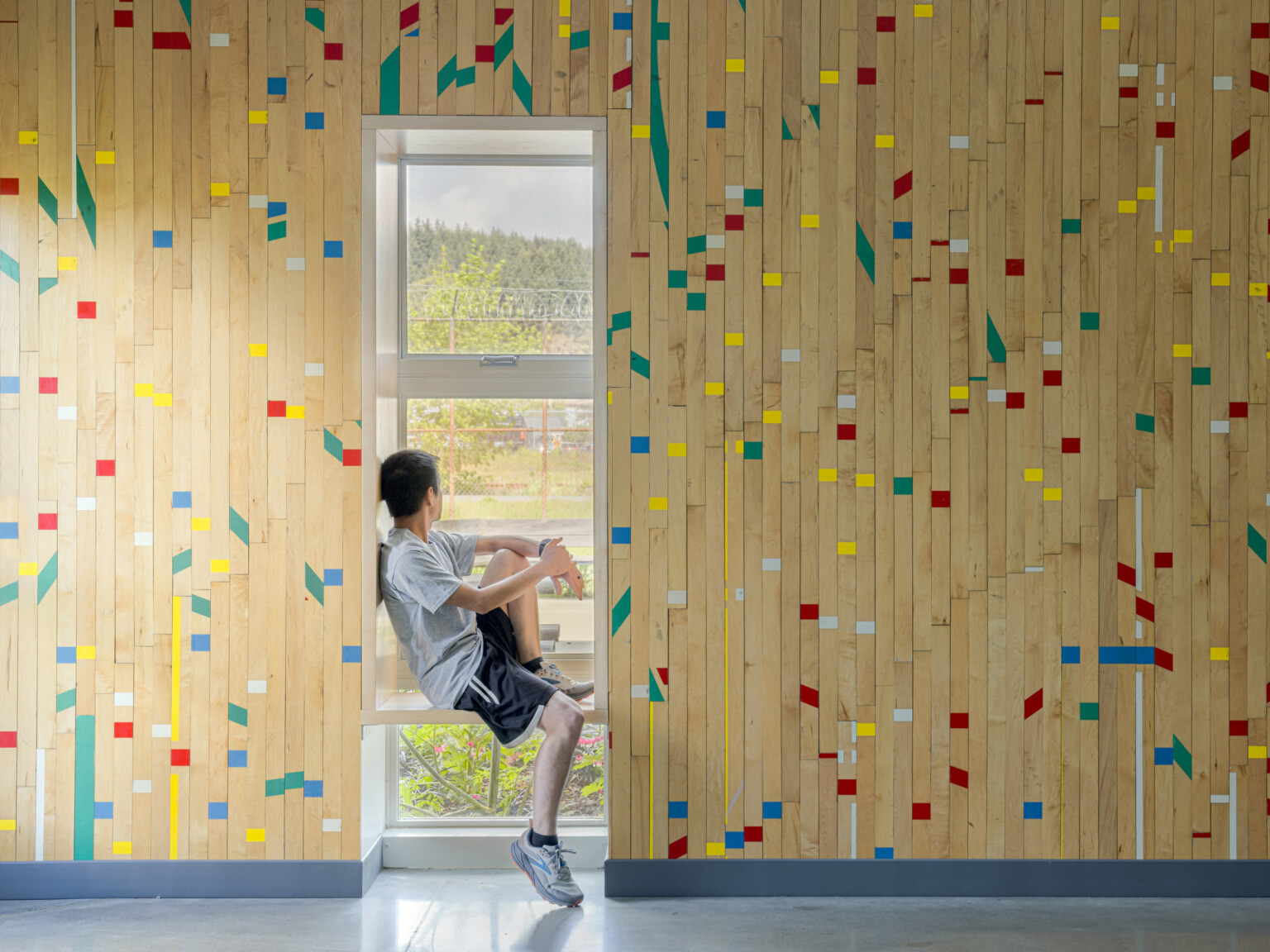
At almost every minute of every day, we make choices about what to do with our time – and the ability to make productive choices is a crucial component of a successful life. Yet people in custody have their time and schedule decided for them. How, then, are people in custody meant to cultivate a skill that’s crucial to their rehabilitation and re-entry? The very design of Green Hill School – with its meandering pathways – is meant to encourage practicing small, everyday choices.
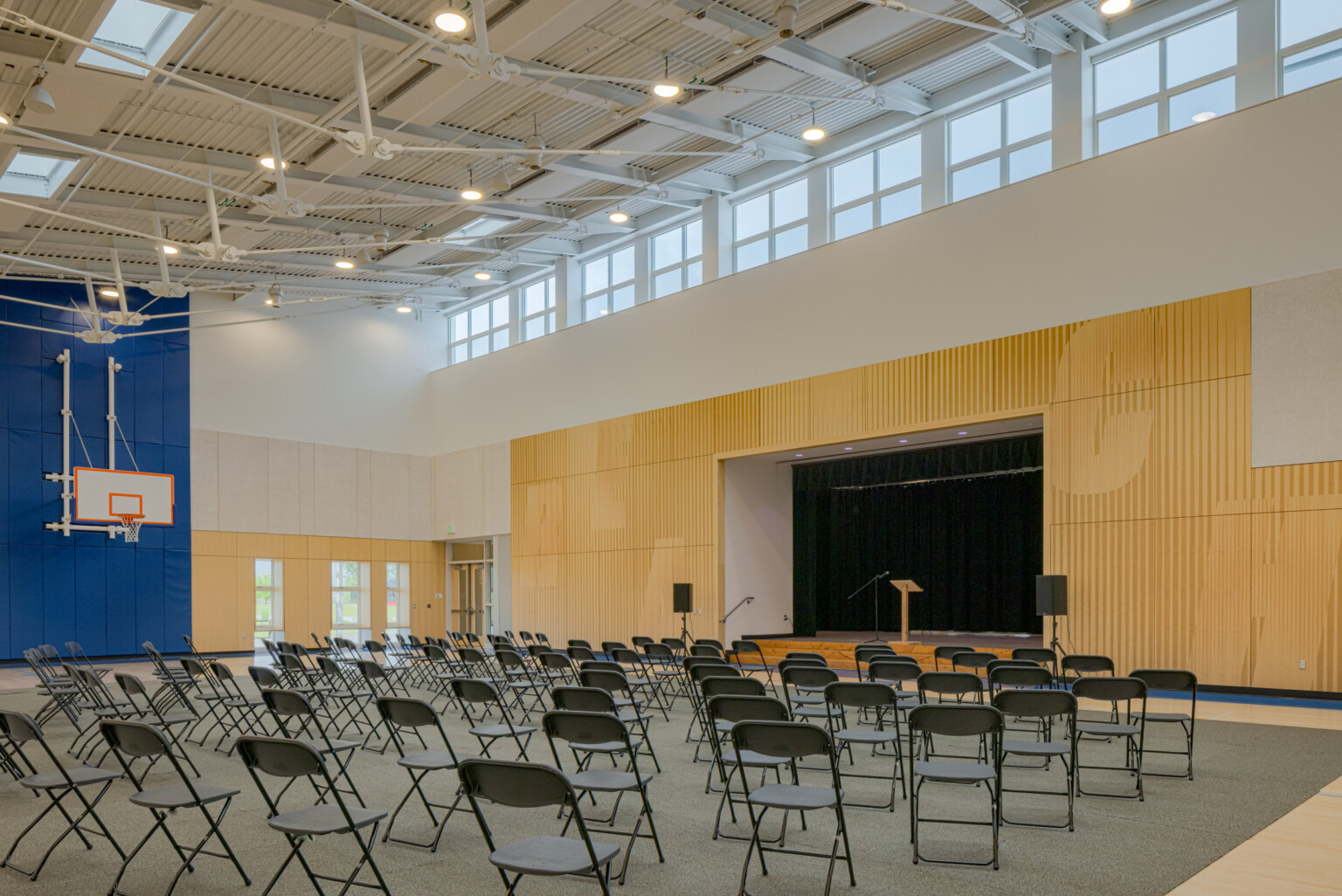
Perhaps no choice is more important than which programs a youth in residence fills their day with. Because Green Hill School offers so many – from Capitol Campus, in which youth actively take part in local and state politics, to a program that teaches youth how to cut hair – our design had to be flexible and adaptable to maximize the engagement with the provided programming. The gym was at the forefront of the Green Hill School design. The space encourages social interaction and features a double-sided stage for performances. Like the gym, the multi-purpose room cultivates socialization. The integration of bean bag chairs, flexible furniture, and storage sets the stage for relaxed social interaction, pivotal for growth. The new teaching kitchen enriches the GHS Garden and Nutrition Program and promotes lifelong health and wellness values. Additionally, an herb garden situated along the main entry pathway offers horticultural therapy for youth, allowing them to harvest fresh herbs and spices for use in the kitchen.
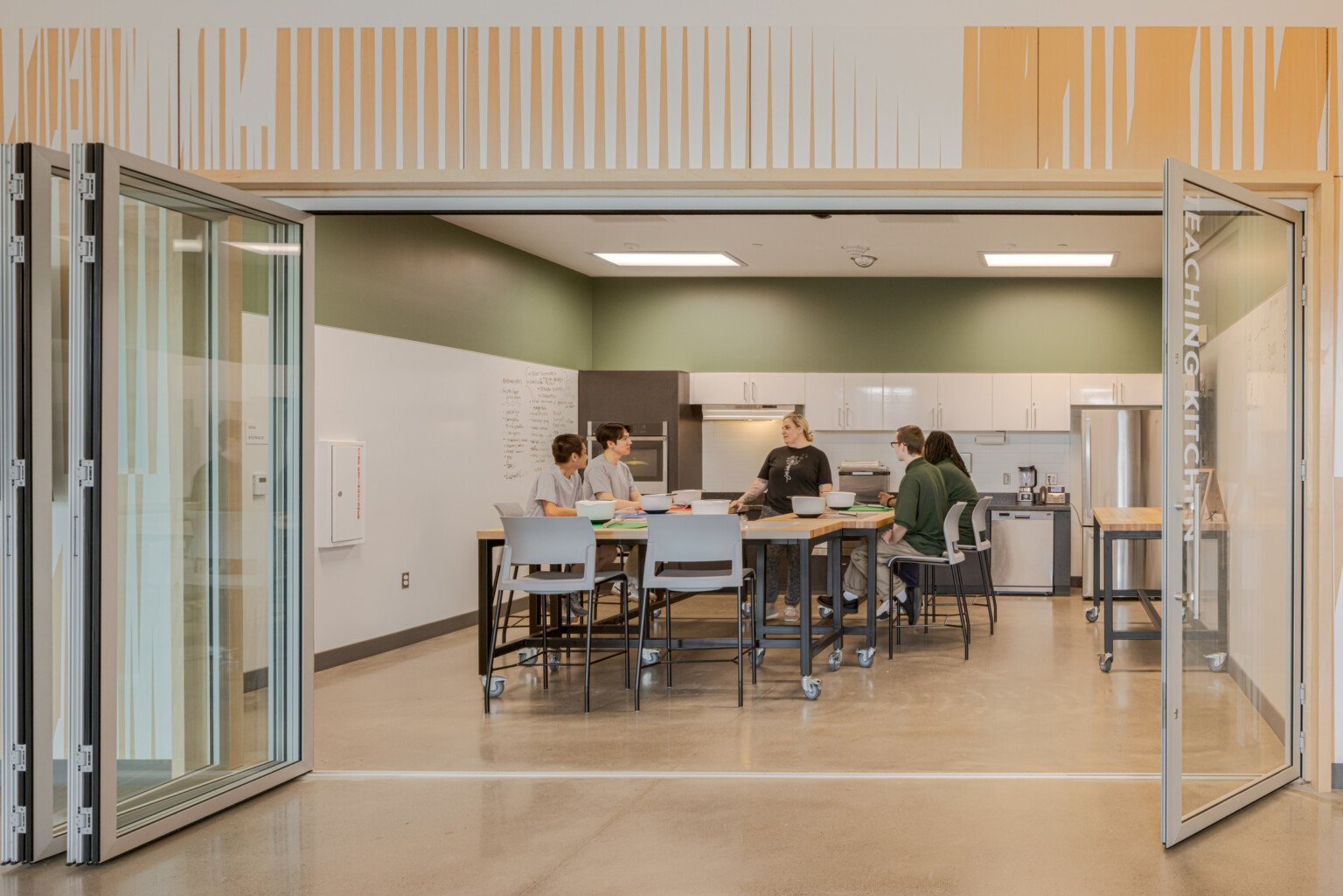
A highly regarded authority on trauma, Dr. Bessel van der Kolk writes that the best way for schools to help traumatized youth is to encourage “movement, play, and joyful engagement.” If recreation creates a sense of safety that supports healing, then it’s easy to imagine the importance of an activity and wellness center located in a medium to maximum security residence for youth in custody, as well as staff.
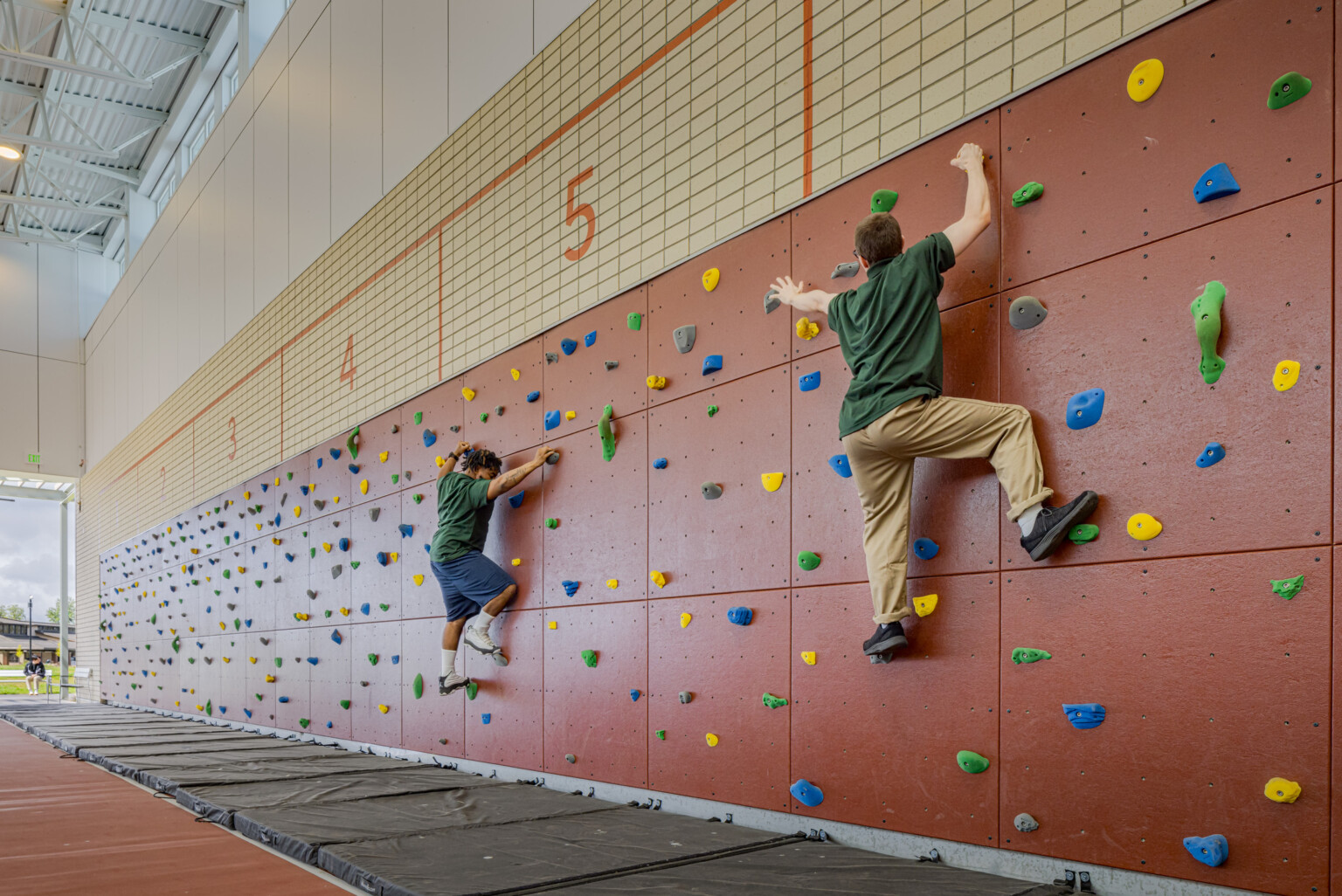

The Green Hill School Activities and Wellness Center brings the latest in trauma-informed design to the people who need it most — youth in custody.